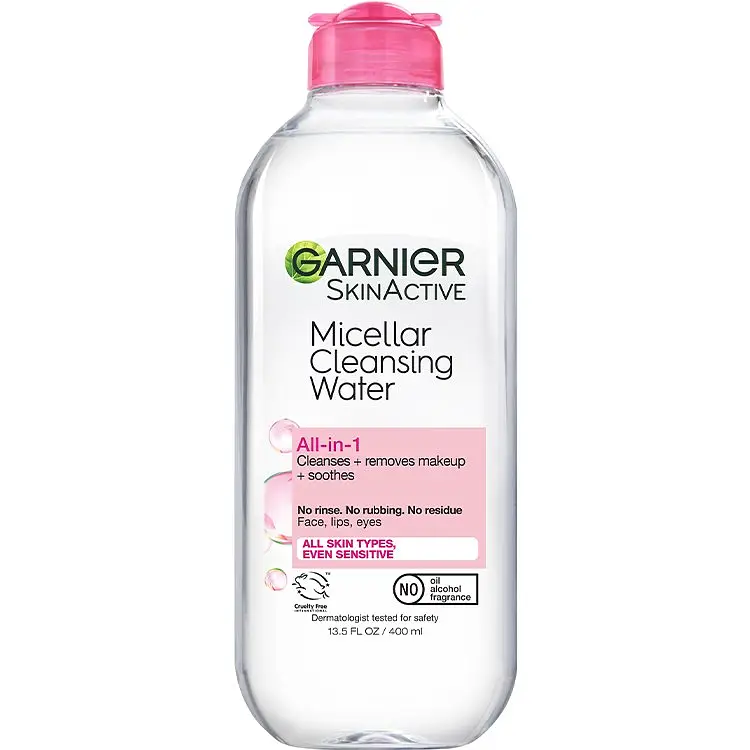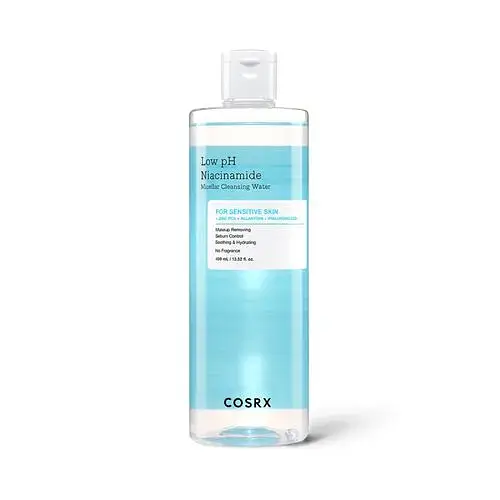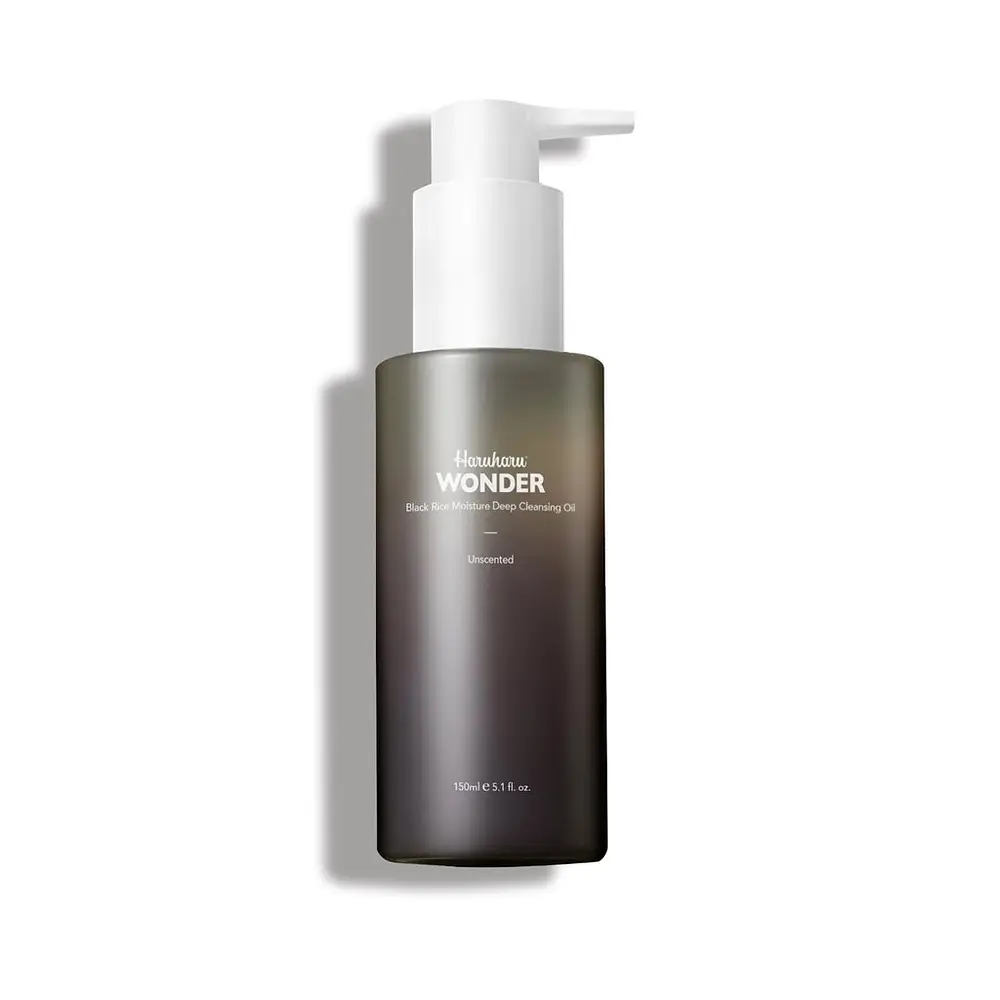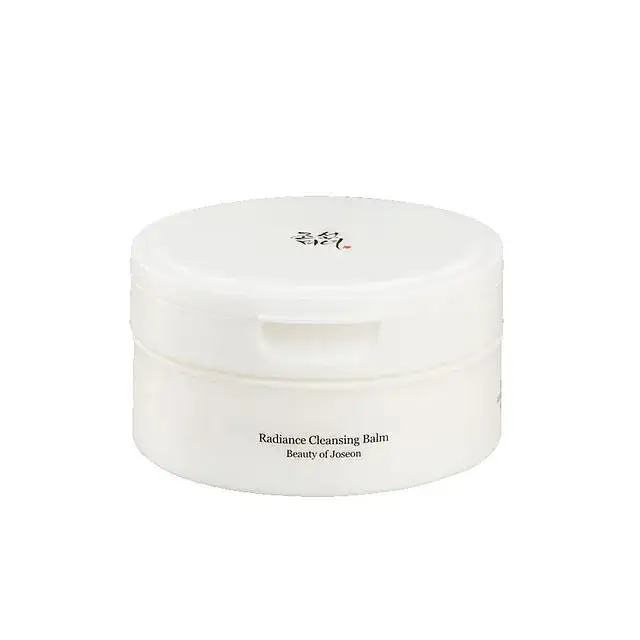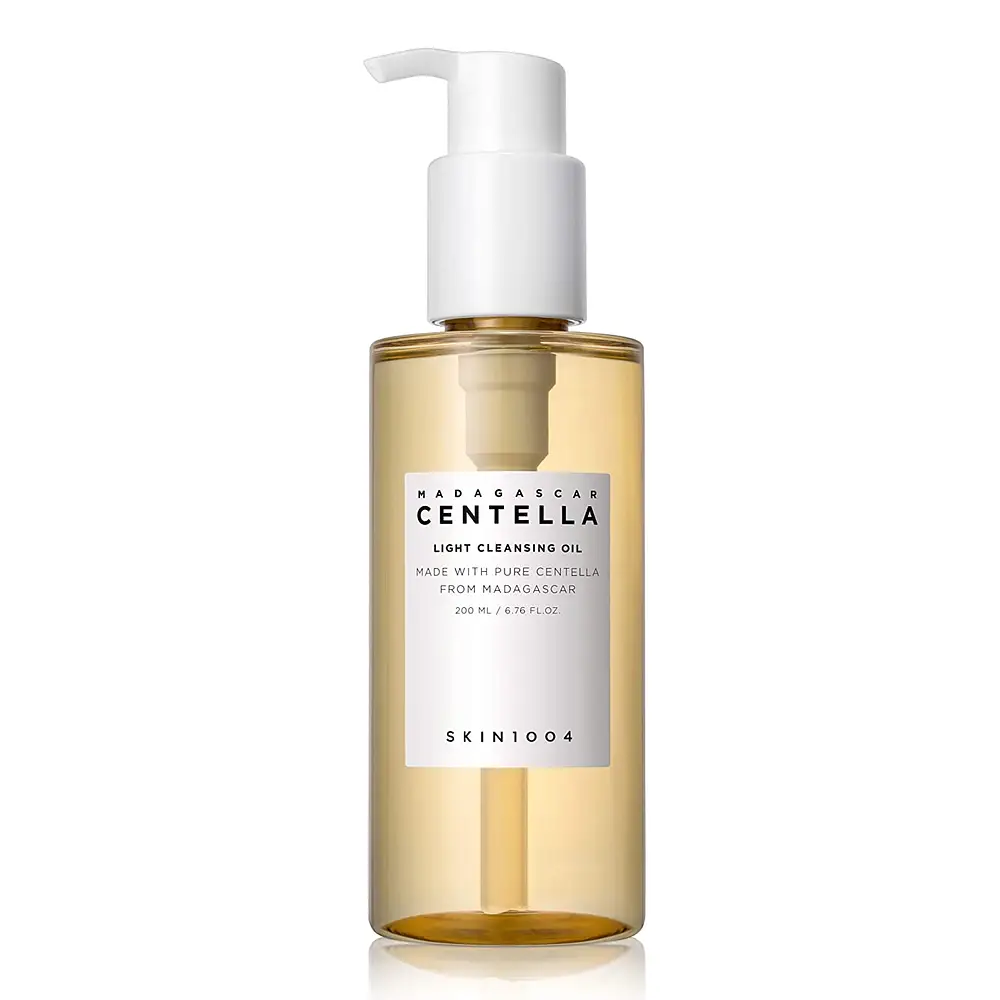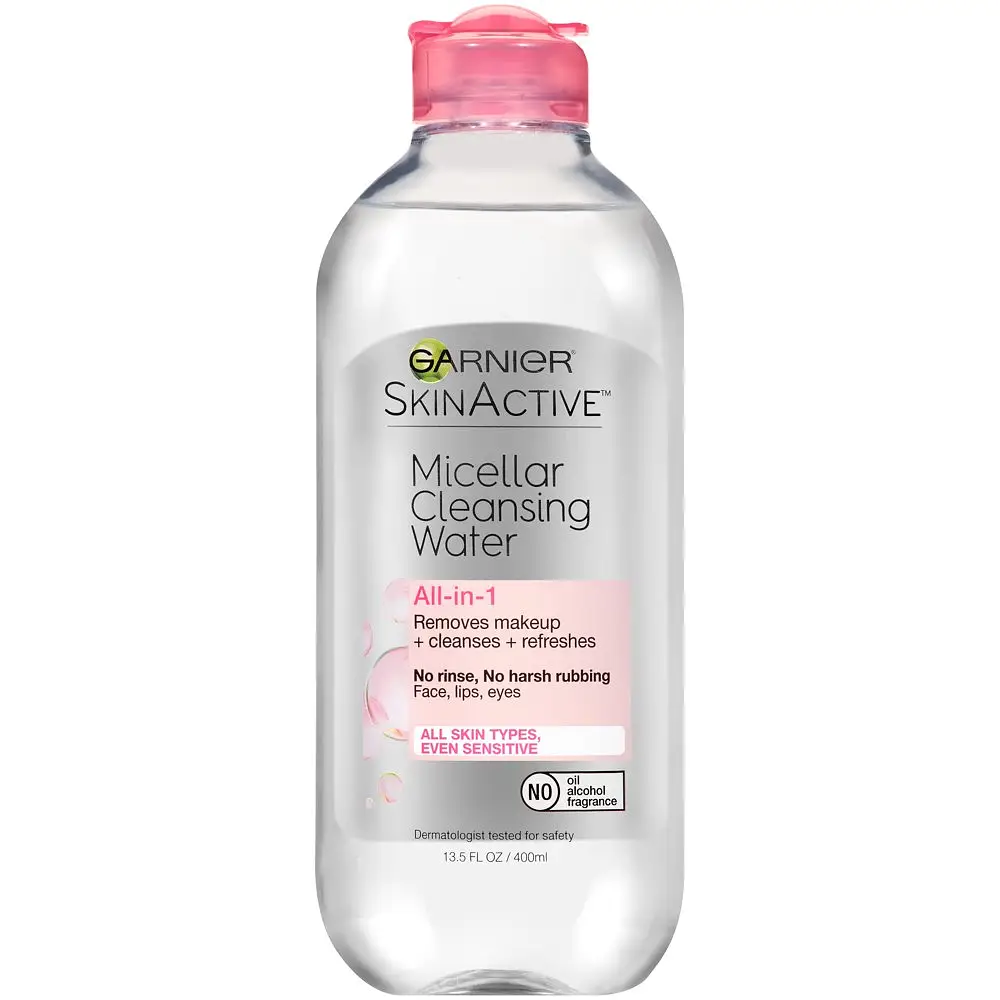Products Scan Our science '%20fill='black'/%3e%3c/svg%3e)
Skincare 
Bath & Body 
Make up 
Trending 
Skincare
Moisturizers
Treatments
Cleansers
Eye Care
Bath & Body
Make up
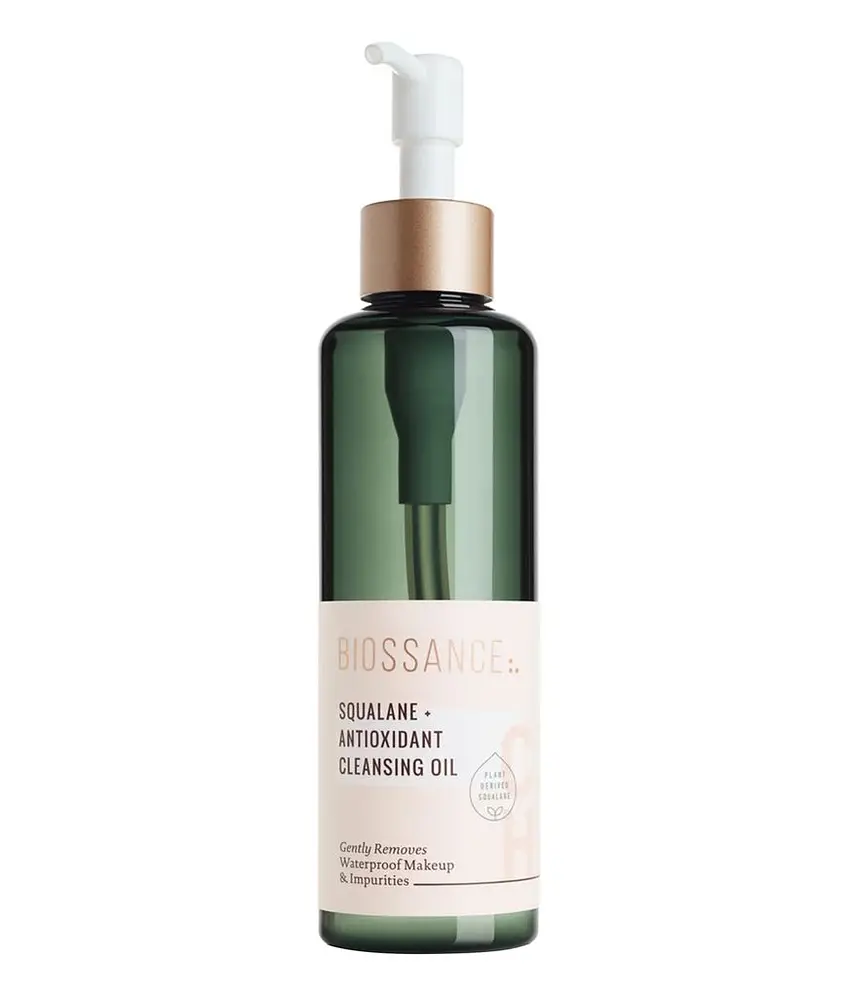
Hover to see details. On mobile? Tap for ingredient stories!
Full Ingredient List (INCI):
















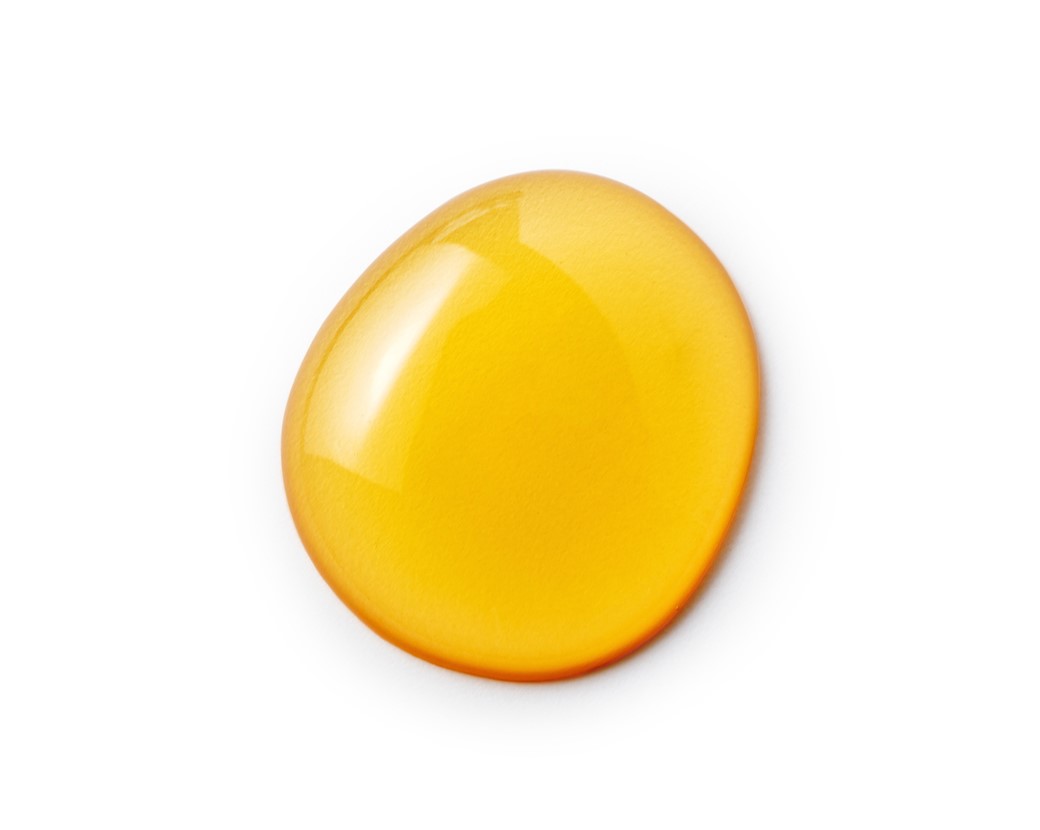

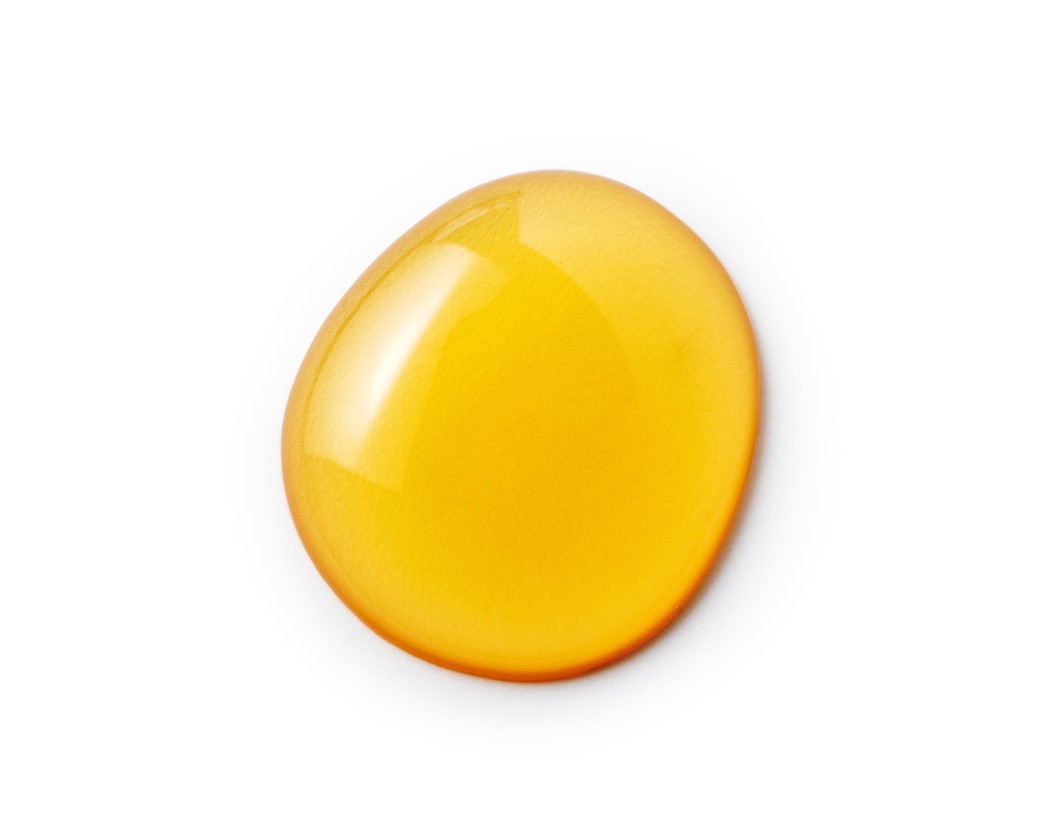

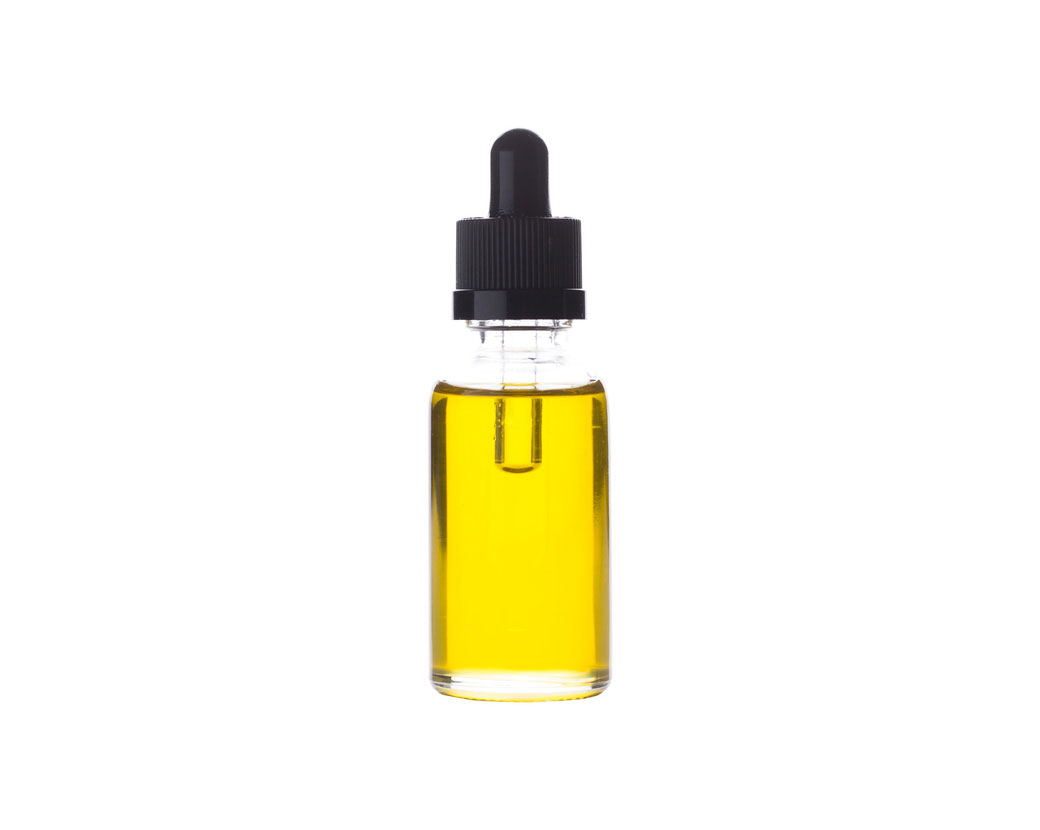



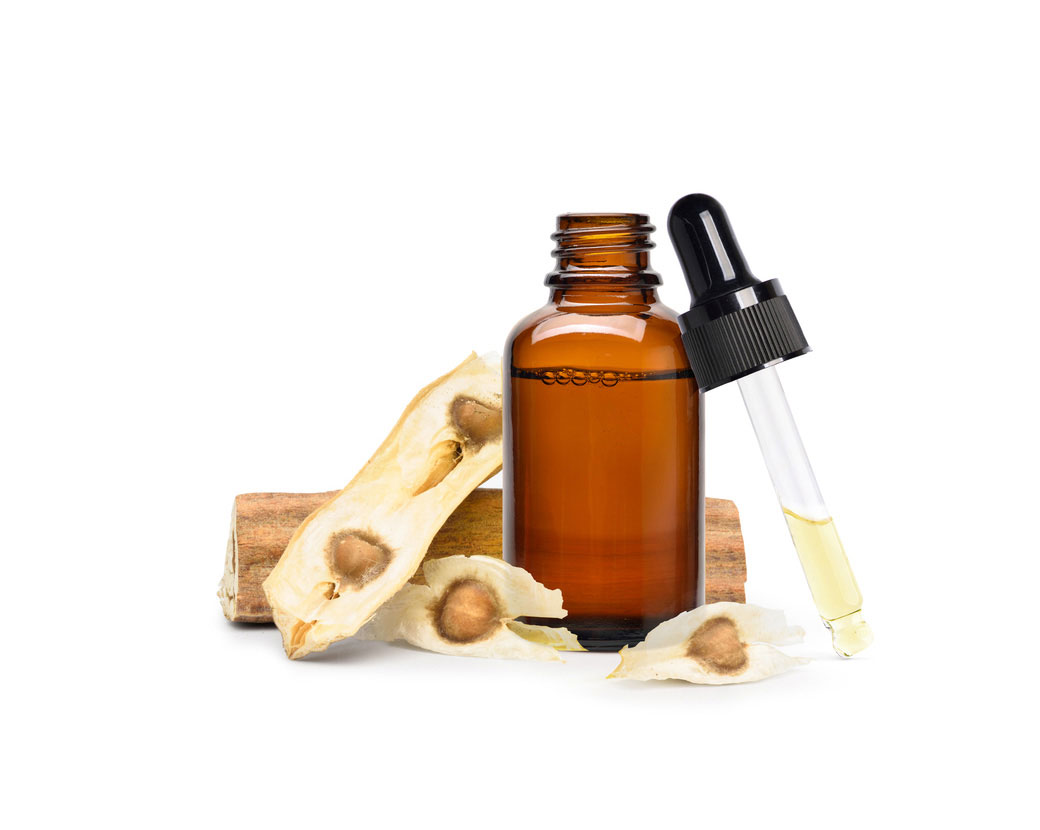







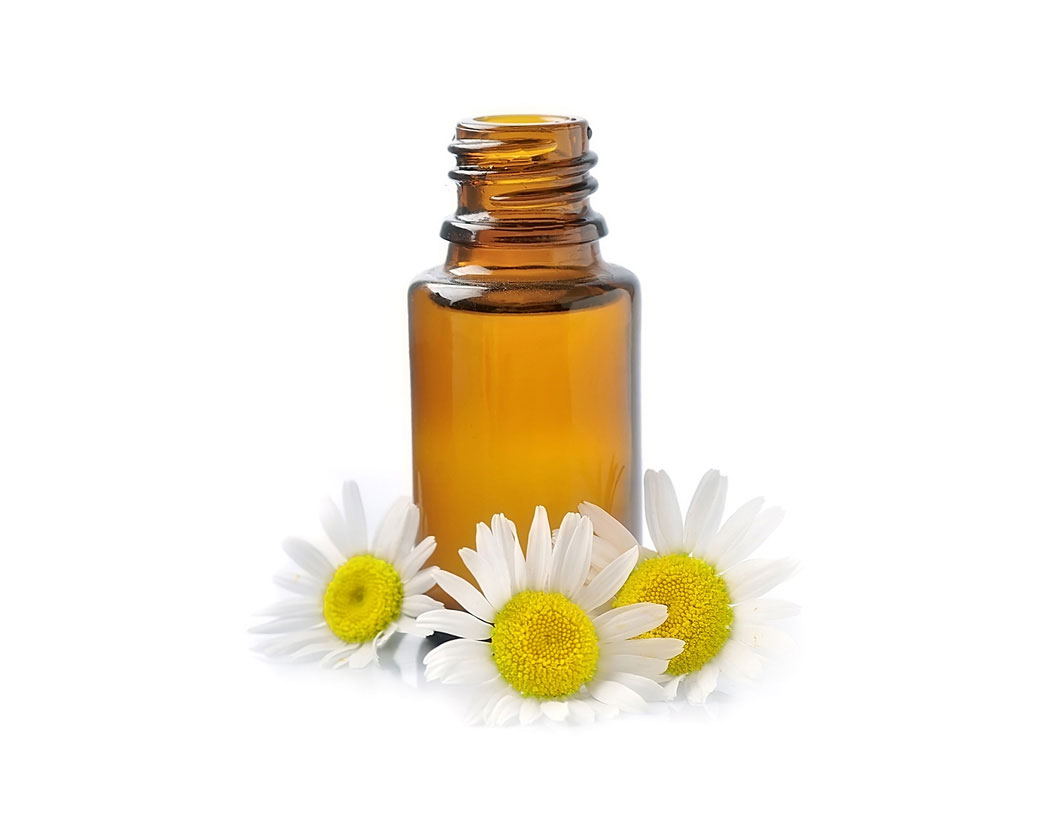











|
Est. %
The Estimated % is our algorithm-based assumption about an ingredient's concentration in a formula. Learn more The Estimated % is our algorithm-based assumption about an ingredient's concentration in a formula. Learn more | Ingredient | Origin | Functions | |
|---|---|---|---|---|
| 45 | Caprylic/Capric Triglyceride  A natural occlusive moisturizing and emollient ingredient, it is a blend of glycerin and two fatty acids, caprylic and capric acid. It creates an oil-based protective layer on the skin, thereby preventing water loss. Caprylic/Capric Triglyceride  A natural occlusive moisturizing and emollient ingredient, it is a blend of glycerin and two fatty acids, caprylic and capric acid. It creates an oil-based protective layer on the skin, thereby preventing water loss. | Botanical Ingredients derived from plants, mosses, and lichens: extracts, oils, powders, juices and other types of processed plant materials. Botanical Ingredients derived from plants, mosses, and lichens: extracts, oils, powders, juices and other types of processed plant materials. Synthetic All kinds of ingredients formulated or produced by a chemical process, or those that have a chemical modification in their structure. Synthetic All kinds of ingredients formulated or produced by a chemical process, or those that have a chemical modification in their structure. | Moisturizing (Occlusive) Occlusives are moisturizing ingredients that seal moisture into the skin, forming a water-resistant barrier. Moisturizing (Occlusive) Occlusives are moisturizing ingredients that seal moisture into the skin, forming a water-resistant barrier. Emollient Emollients fill the micro-cracks in the skin and leave it feeling soft and pleasant to the touch. Emollients are often mistakenly perceived as moisturizing ingredients. Emollient Emollients fill the micro-cracks in the skin and leave it feeling soft and pleasant to the touch. Emollients are often mistakenly perceived as moisturizing ingredients. Fragrance Fragrance ingredients add scent to a product or hide ('mask') the undesired aroma of other ingredients. Fragrance Fragrance ingredients add scent to a product or hide ('mask') the undesired aroma of other ingredients. Formula helper
Formula helper
| |
| 22 | | Botanical Ingredients derived from plants, mosses, and lichens: extracts, oils, powders, juices and other types of processed plant materials. Botanical Ingredients derived from plants, mosses, and lichens: extracts, oils, powders, juices and other types of processed plant materials. Synthetic All kinds of ingredients formulated or produced by a chemical process, or those that have a chemical modification in their structure. Synthetic All kinds of ingredients formulated or produced by a chemical process, or those that have a chemical modification in their structure. | Emollient Emollients fill the micro-cracks in the skin and leave it feeling soft and pleasant to the touch. Emollients are often mistakenly perceived as moisturizing ingredients. Emollient Emollients fill the micro-cracks in the skin and leave it feeling soft and pleasant to the touch. Emollients are often mistakenly perceived as moisturizing ingredients. Formula helper
Formula helper
| |
| 11 | Squalane  An occlusive moisturizing and emollient compound that forms part of the skin’s sebum. The main source of squalane had always been shark liver. Now, however, it is manufactured synthetically or derived from plant oils, such as olive and peanut oil. Squalane  An occlusive moisturizing and emollient compound that forms part of the skin’s sebum. The main source of squalane had always been shark liver. Now, however, it is manufactured synthetically or derived from plant oils, such as olive and peanut oil. | Botanical Ingredients derived from plants, mosses, and lichens: extracts, oils, powders, juices and other types of processed plant materials. Botanical Ingredients derived from plants, mosses, and lichens: extracts, oils, powders, juices and other types of processed plant materials. Synthetic All kinds of ingredients formulated or produced by a chemical process, or those that have a chemical modification in their structure. Synthetic All kinds of ingredients formulated or produced by a chemical process, or those that have a chemical modification in their structure. Animal Ingredients derived from animals (including birds, fish, crustaceans, mollusks, and insects) or produced by animals (e.g. dairy- and egg-derived ingredients, bee products, silk, pearls, etc.) Animal Ingredients derived from animals (including birds, fish, crustaceans, mollusks, and insects) or produced by animals (e.g. dairy- and egg-derived ingredients, bee products, silk, pearls, etc.) | Moisturizing (Occlusive) Occlusives are moisturizing ingredients that seal moisture into the skin, forming a water-resistant barrier. Moisturizing (Occlusive) Occlusives are moisturizing ingredients that seal moisture into the skin, forming a water-resistant barrier. Emollient Emollients fill the micro-cracks in the skin and leave it feeling soft and pleasant to the touch. Emollients are often mistakenly perceived as moisturizing ingredients. Emollient Emollients fill the micro-cracks in the skin and leave it feeling soft and pleasant to the touch. Emollients are often mistakenly perceived as moisturizing ingredients. | |
| 6 | | Petroleum Ingredients derived from petroleum, also called crude oil. Crude oil deposits were obtained from the remains of ancient organisms, such as plants, algae, and bacteria. Petroleum Ingredients derived from petroleum, also called crude oil. Crude oil deposits were obtained from the remains of ancient organisms, such as plants, algae, and bacteria. | Formula helper
Formula helper
| |
| 4 | | Botanical Ingredients derived from plants, mosses, and lichens: extracts, oils, powders, juices and other types of processed plant materials. Botanical Ingredients derived from plants, mosses, and lichens: extracts, oils, powders, juices and other types of processed plant materials. Synthetic All kinds of ingredients formulated or produced by a chemical process, or those that have a chemical modification in their structure. Synthetic All kinds of ingredients formulated or produced by a chemical process, or those that have a chemical modification in their structure. | Emollient Emollients fill the micro-cracks in the skin and leave it feeling soft and pleasant to the touch. Emollients are often mistakenly perceived as moisturizing ingredients. Emollient Emollients fill the micro-cracks in the skin and leave it feeling soft and pleasant to the touch. Emollients are often mistakenly perceived as moisturizing ingredients. Formula helper
Formula helper
| |
| 3 | Triethylhexanoin  An occlusive and emollient ester of glycerin and a fatty acid. It is easily spreadable and does not leave a sticky after-feel. Triethylhexanoin  An occlusive and emollient ester of glycerin and a fatty acid. It is easily spreadable and does not leave a sticky after-feel. | Botanical Ingredients derived from plants, mosses, and lichens: extracts, oils, powders, juices and other types of processed plant materials. Botanical Ingredients derived from plants, mosses, and lichens: extracts, oils, powders, juices and other types of processed plant materials. Synthetic All kinds of ingredients formulated or produced by a chemical process, or those that have a chemical modification in their structure. Synthetic All kinds of ingredients formulated or produced by a chemical process, or those that have a chemical modification in their structure. | Moisturizing (Occlusive) Occlusives are moisturizing ingredients that seal moisture into the skin, forming a water-resistant barrier. Moisturizing (Occlusive) Occlusives are moisturizing ingredients that seal moisture into the skin, forming a water-resistant barrier. Emollient Emollients fill the micro-cracks in the skin and leave it feeling soft and pleasant to the touch. Emollients are often mistakenly perceived as moisturizing ingredients. Emollient Emollients fill the micro-cracks in the skin and leave it feeling soft and pleasant to the touch. Emollients are often mistakenly perceived as moisturizing ingredients. Fragrance Fragrance ingredients add scent to a product or hide ('mask') the undesired aroma of other ingredients. Fragrance Fragrance ingredients add scent to a product or hide ('mask') the undesired aroma of other ingredients. Formula helper
Formula helper
| |
| 2 | Citrus Aurantium Dulcis (Orange) Oil  A fragrant essential oil expressed or distilled from the rinds of sweet oranges. Its main constituent is limonene, which is responsible for its fresh, citrusy smell. It may induce sun allergies in people sensitive to citrus fruits. Citrus Aurantium Dulcis (Orange) Oil  A fragrant essential oil expressed or distilled from the rinds of sweet oranges. Its main constituent is limonene, which is responsible for its fresh, citrusy smell. It may induce sun allergies in people sensitive to citrus fruits. | Botanical Ingredients derived from plants, mosses, and lichens: extracts, oils, powders, juices and other types of processed plant materials. Botanical Ingredients derived from plants, mosses, and lichens: extracts, oils, powders, juices and other types of processed plant materials. | Fragrance Fragrance ingredients add scent to a product or hide ('mask') the undesired aroma of other ingredients. Fragrance Fragrance ingredients add scent to a product or hide ('mask') the undesired aroma of other ingredients. Formula helper
Formula helper
| |
| 1.5 | Lavandula Angustifolia (Lavender) Oil  An essential oil derived from common, or true, lavender. It is used in skincare for its lovely, calming scent. Like all essential oils, however, it may cause a contact skin allergy in more sensitive individuals. Lavandula Angustifolia (Lavender) Oil  An essential oil derived from common, or true, lavender. It is used in skincare for its lovely, calming scent. Like all essential oils, however, it may cause a contact skin allergy in more sensitive individuals. | Botanical Ingredients derived from plants, mosses, and lichens: extracts, oils, powders, juices and other types of processed plant materials. Botanical Ingredients derived from plants, mosses, and lichens: extracts, oils, powders, juices and other types of processed plant materials. | Fragrance Fragrance ingredients add scent to a product or hide ('mask') the undesired aroma of other ingredients. Fragrance Fragrance ingredients add scent to a product or hide ('mask') the undesired aroma of other ingredients. | |
| 1 | Rosa Moschata Seed Oil  An occlusive and emollient fatty oil expressed from the seeds of the musk rose that is rich in antioxidant carotenoids such as pro-vitamin A. Rosa Moschata Seed Oil  An occlusive and emollient fatty oil expressed from the seeds of the musk rose that is rich in antioxidant carotenoids such as pro-vitamin A. | Botanical Ingredients derived from plants, mosses, and lichens: extracts, oils, powders, juices and other types of processed plant materials. Botanical Ingredients derived from plants, mosses, and lichens: extracts, oils, powders, juices and other types of processed plant materials. | Moisturizing (Occlusive) Occlusives are moisturizing ingredients that seal moisture into the skin, forming a water-resistant barrier. Moisturizing (Occlusive) Occlusives are moisturizing ingredients that seal moisture into the skin, forming a water-resistant barrier. Emollient Emollients fill the micro-cracks in the skin and leave it feeling soft and pleasant to the touch. Emollients are often mistakenly perceived as moisturizing ingredients. Emollient Emollients fill the micro-cracks in the skin and leave it feeling soft and pleasant to the touch. Emollients are often mistakenly perceived as moisturizing ingredients. | |
| 0.3 | | Animal Ingredients derived from animals (including birds, fish, crustaceans, mollusks, and insects) or produced by animals (e.g. dairy- and egg-derived ingredients, bee products, silk, pearls, etc.) Animal Ingredients derived from animals (including birds, fish, crustaceans, mollusks, and insects) or produced by animals (e.g. dairy- and egg-derived ingredients, bee products, silk, pearls, etc.) | Moisturizing (Occlusive) Occlusives are moisturizing ingredients that seal moisture into the skin, forming a water-resistant barrier. Moisturizing (Occlusive) Occlusives are moisturizing ingredients that seal moisture into the skin, forming a water-resistant barrier. Emollient Emollients fill the micro-cracks in the skin and leave it feeling soft and pleasant to the touch. Emollients are often mistakenly perceived as moisturizing ingredients. Emollient Emollients fill the micro-cracks in the skin and leave it feeling soft and pleasant to the touch. Emollients are often mistakenly perceived as moisturizing ingredients. | |
| 0.3 | | Botanical Ingredients derived from plants, mosses, and lichens: extracts, oils, powders, juices and other types of processed plant materials. Botanical Ingredients derived from plants, mosses, and lichens: extracts, oils, powders, juices and other types of processed plant materials. | Moisturizing (Occlusive) Occlusives are moisturizing ingredients that seal moisture into the skin, forming a water-resistant barrier. Moisturizing (Occlusive) Occlusives are moisturizing ingredients that seal moisture into the skin, forming a water-resistant barrier. Antioxidant Antioxidants reduce the oxidative stress caused by free radicals and prevent accelerated skin aging. Antioxidant Antioxidants reduce the oxidative stress caused by free radicals and prevent accelerated skin aging. Emollient Emollients fill the micro-cracks in the skin and leave it feeling soft and pleasant to the touch. Emollients are often mistakenly perceived as moisturizing ingredients. Emollient Emollients fill the micro-cracks in the skin and leave it feeling soft and pleasant to the touch. Emollients are often mistakenly perceived as moisturizing ingredients. | |
| 0.3 | Oenothera Biennis (Evening Primrose) Oil  An occlusive moisturizing and emollient fatty oil expressed from the seeds of a yellow-flowered plant which often opens its flowers in the evening (hence the name). It is light and suitable for problematic, eczematous, and inflammation-prone skin. Oenothera Biennis (Evening Primrose) Oil  An occlusive moisturizing and emollient fatty oil expressed from the seeds of a yellow-flowered plant which often opens its flowers in the evening (hence the name). It is light and suitable for problematic, eczematous, and inflammation-prone skin. | Botanical Ingredients derived from plants, mosses, and lichens: extracts, oils, powders, juices and other types of processed plant materials. Botanical Ingredients derived from plants, mosses, and lichens: extracts, oils, powders, juices and other types of processed plant materials. | Moisturizing (Occlusive) Occlusives are moisturizing ingredients that seal moisture into the skin, forming a water-resistant barrier. Moisturizing (Occlusive) Occlusives are moisturizing ingredients that seal moisture into the skin, forming a water-resistant barrier. Soothing Soothing ingredients reduce the signs of sensitivity in irritated and inflamed skin. This includes anti-inflammatory ingredients, anti-itch agents, and topical analgesics. Soothing Soothing ingredients reduce the signs of sensitivity in irritated and inflamed skin. This includes anti-inflammatory ingredients, anti-itch agents, and topical analgesics. Emollient Emollients fill the micro-cracks in the skin and leave it feeling soft and pleasant to the touch. Emollients are often mistakenly perceived as moisturizing ingredients. Emollient Emollients fill the micro-cracks in the skin and leave it feeling soft and pleasant to the touch. Emollients are often mistakenly perceived as moisturizing ingredients. | |
| 0.3 | Moringa Oleifera Seed Oil  An oil obtained from the seeds of Moringa oleifera, a fast-growing bush native to Northern India and the sub-Himalayan regions. It contains mainly oleic acid, as well as many additional anti-inflammatory compounds and high levels of vitamin E. Moringa Oleifera Seed Oil  An oil obtained from the seeds of Moringa oleifera, a fast-growing bush native to Northern India and the sub-Himalayan regions. It contains mainly oleic acid, as well as many additional anti-inflammatory compounds and high levels of vitamin E. | Botanical Ingredients derived from plants, mosses, and lichens: extracts, oils, powders, juices and other types of processed plant materials. Botanical Ingredients derived from plants, mosses, and lichens: extracts, oils, powders, juices and other types of processed plant materials. | Moisturizing (Occlusive) Occlusives are moisturizing ingredients that seal moisture into the skin, forming a water-resistant barrier. Moisturizing (Occlusive) Occlusives are moisturizing ingredients that seal moisture into the skin, forming a water-resistant barrier. Antioxidant Antioxidants reduce the oxidative stress caused by free radicals and prevent accelerated skin aging. Antioxidant Antioxidants reduce the oxidative stress caused by free radicals and prevent accelerated skin aging. Soothing Soothing ingredients reduce the signs of sensitivity in irritated and inflamed skin. This includes anti-inflammatory ingredients, anti-itch agents, and topical analgesics. Soothing Soothing ingredients reduce the signs of sensitivity in irritated and inflamed skin. This includes anti-inflammatory ingredients, anti-itch agents, and topical analgesics. Emollient Emollients fill the micro-cracks in the skin and leave it feeling soft and pleasant to the touch. Emollients are often mistakenly perceived as moisturizing ingredients. Emollient Emollients fill the micro-cracks in the skin and leave it feeling soft and pleasant to the touch. Emollients are often mistakenly perceived as moisturizing ingredients. | |
| 0.3 | Lavandula Hybrida Oil  A fragrant essential oil distilled from a lavender hybrid of the two most common lavender species: true lavender and spike lavender. It contains linalool and linalyl acetate as well as eucalyptol and camphor, which altogether give it a cooling, lavender scent. Lavandula Hybrida Oil  A fragrant essential oil distilled from a lavender hybrid of the two most common lavender species: true lavender and spike lavender. It contains linalool and linalyl acetate as well as eucalyptol and camphor, which altogether give it a cooling, lavender scent. | Botanical Ingredients derived from plants, mosses, and lichens: extracts, oils, powders, juices and other types of processed plant materials. Botanical Ingredients derived from plants, mosses, and lichens: extracts, oils, powders, juices and other types of processed plant materials. | Fragrance Fragrance ingredients add scent to a product or hide ('mask') the undesired aroma of other ingredients. Fragrance Fragrance ingredients add scent to a product or hide ('mask') the undesired aroma of other ingredients. | |
| 0.3 | | Botanical Ingredients derived from plants, mosses, and lichens: extracts, oils, powders, juices and other types of processed plant materials. Botanical Ingredients derived from plants, mosses, and lichens: extracts, oils, powders, juices and other types of processed plant materials. | ||
| 0.3 | | Botanical Ingredients derived from plants, mosses, and lichens: extracts, oils, powders, juices and other types of processed plant materials. Botanical Ingredients derived from plants, mosses, and lichens: extracts, oils, powders, juices and other types of processed plant materials. | ||
| 0.3 | Anthemis Nobilis Flower Oil  Distilled from the flowers of Roman chamomile, this fragrant essential oil is mainly constituted of esters of angelic and tiglic acid, which give it a sweet, crisp, fruity, and herbaceous scent. Anthemis Nobilis Flower Oil  Distilled from the flowers of Roman chamomile, this fragrant essential oil is mainly constituted of esters of angelic and tiglic acid, which give it a sweet, crisp, fruity, and herbaceous scent. | Botanical Ingredients derived from plants, mosses, and lichens: extracts, oils, powders, juices and other types of processed plant materials. Botanical Ingredients derived from plants, mosses, and lichens: extracts, oils, powders, juices and other types of processed plant materials. | Soothing Soothing ingredients reduce the signs of sensitivity in irritated and inflamed skin. This includes anti-inflammatory ingredients, anti-itch agents, and topical analgesics. Soothing Soothing ingredients reduce the signs of sensitivity in irritated and inflamed skin. This includes anti-inflammatory ingredients, anti-itch agents, and topical analgesics. Fragrance Fragrance ingredients add scent to a product or hide ('mask') the undesired aroma of other ingredients. Fragrance Fragrance ingredients add scent to a product or hide ('mask') the undesired aroma of other ingredients. | |
| 0.3 | | Botanical Ingredients derived from plants, mosses, and lichens: extracts, oils, powders, juices and other types of processed plant materials. Botanical Ingredients derived from plants, mosses, and lichens: extracts, oils, powders, juices and other types of processed plant materials. | Abrasive Abrasives 'physically' exfoliate the skin (i.e., manually remove dead skin cells) by rubbing against its surface. Abrasive Abrasives 'physically' exfoliate the skin (i.e., manually remove dead skin cells) by rubbing against its surface. | |
| 0.3 | Helianthus Annuus (Sunflower) Seed Oil  A fatty oil expressed from sunflower seeds and one of the most commonly used oils in skincare. It has great emollient and occlusive moisturizing properties. Sunflower oil is one of the richest sources of vitamin E – an important skin antioxidant. Helianthus Annuus (Sunflower) Seed Oil  A fatty oil expressed from sunflower seeds and one of the most commonly used oils in skincare. It has great emollient and occlusive moisturizing properties. Sunflower oil is one of the richest sources of vitamin E – an important skin antioxidant. | Botanical Ingredients derived from plants, mosses, and lichens: extracts, oils, powders, juices and other types of processed plant materials. Botanical Ingredients derived from plants, mosses, and lichens: extracts, oils, powders, juices and other types of processed plant materials. | Moisturizing (Occlusive) Occlusives are moisturizing ingredients that seal moisture into the skin, forming a water-resistant barrier. Moisturizing (Occlusive) Occlusives are moisturizing ingredients that seal moisture into the skin, forming a water-resistant barrier. Emollient Emollients fill the micro-cracks in the skin and leave it feeling soft and pleasant to the touch. Emollients are often mistakenly perceived as moisturizing ingredients. Emollient Emollients fill the micro-cracks in the skin and leave it feeling soft and pleasant to the touch. Emollients are often mistakenly perceived as moisturizing ingredients. Fragrance Fragrance ingredients add scent to a product or hide ('mask') the undesired aroma of other ingredients. Fragrance Fragrance ingredients add scent to a product or hide ('mask') the undesired aroma of other ingredients. Formula helper
Formula helper
| |
| 0.3 | Tocopherol  Simply another name for vitamin E. Tocopherol is a fantastic ingredient and especially beneficial for dry and inflamed skin. It has occlusive moisturizing, emollient, antioxidant, and photoprotective properties. Tocopherol  Simply another name for vitamin E. Tocopherol is a fantastic ingredient and especially beneficial for dry and inflamed skin. It has occlusive moisturizing, emollient, antioxidant, and photoprotective properties. | Botanical Ingredients derived from plants, mosses, and lichens: extracts, oils, powders, juices and other types of processed plant materials. Botanical Ingredients derived from plants, mosses, and lichens: extracts, oils, powders, juices and other types of processed plant materials. Synthetic All kinds of ingredients formulated or produced by a chemical process, or those that have a chemical modification in their structure. Synthetic All kinds of ingredients formulated or produced by a chemical process, or those that have a chemical modification in their structure. | Moisturizing (Occlusive) Occlusives are moisturizing ingredients that seal moisture into the skin, forming a water-resistant barrier. Moisturizing (Occlusive) Occlusives are moisturizing ingredients that seal moisture into the skin, forming a water-resistant barrier. Antioxidant Antioxidants reduce the oxidative stress caused by free radicals and prevent accelerated skin aging. Antioxidant Antioxidants reduce the oxidative stress caused by free radicals and prevent accelerated skin aging. Emollient Emollients fill the micro-cracks in the skin and leave it feeling soft and pleasant to the touch. Emollients are often mistakenly perceived as moisturizing ingredients. Emollient Emollients fill the micro-cracks in the skin and leave it feeling soft and pleasant to the touch. Emollients are often mistakenly perceived as moisturizing ingredients. Fragrance Fragrance ingredients add scent to a product or hide ('mask') the undesired aroma of other ingredients. Fragrance Fragrance ingredients add scent to a product or hide ('mask') the undesired aroma of other ingredients. Formula helper
Formula helper
| |
| 0.3 | Limonene  One of the most used fragrances in skincare products. It is produced from the peels of citrus fruits and has a fresh, pleasant, citrusy smell. People who are sensitive to citrus should try to avoid it, or at least do a patch test before using it. Limonene  One of the most used fragrances in skincare products. It is produced from the peels of citrus fruits and has a fresh, pleasant, citrusy smell. People who are sensitive to citrus should try to avoid it, or at least do a patch test before using it. | Botanical Ingredients derived from plants, mosses, and lichens: extracts, oils, powders, juices and other types of processed plant materials. Botanical Ingredients derived from plants, mosses, and lichens: extracts, oils, powders, juices and other types of processed plant materials. Synthetic All kinds of ingredients formulated or produced by a chemical process, or those that have a chemical modification in their structure. Synthetic All kinds of ingredients formulated or produced by a chemical process, or those that have a chemical modification in their structure. | Fragrance Fragrance ingredients add scent to a product or hide ('mask') the undesired aroma of other ingredients. Fragrance Fragrance ingredients add scent to a product or hide ('mask') the undesired aroma of other ingredients. Formula helper
Formula helper
| |
| 0.3 | Linalool  A fragrant, volatile compound naturally present in many essential oils. It has a pleasant scent and is often used in skincare products as a fragrance. People with sensitive skin should try to avoid it, or at least do a patch test before using it. Linalool  A fragrant, volatile compound naturally present in many essential oils. It has a pleasant scent and is often used in skincare products as a fragrance. People with sensitive skin should try to avoid it, or at least do a patch test before using it. | Botanical Ingredients derived from plants, mosses, and lichens: extracts, oils, powders, juices and other types of processed plant materials. Botanical Ingredients derived from plants, mosses, and lichens: extracts, oils, powders, juices and other types of processed plant materials. Synthetic All kinds of ingredients formulated or produced by a chemical process, or those that have a chemical modification in their structure. Synthetic All kinds of ingredients formulated or produced by a chemical process, or those that have a chemical modification in their structure. | Fragrance Fragrance ingredients add scent to a product or hide ('mask') the undesired aroma of other ingredients. Fragrance Fragrance ingredients add scent to a product or hide ('mask') the undesired aroma of other ingredients. | |
| 45  Caprylic/Capric Triglyceride Function: Moisturizing (Occlusive), Moisturizing (Occlusive) Occlusives are moisturizing ingredients that seal moisture into the skin, forming a water-resistant barrier. Moisturizing (Occlusive), Moisturizing (Occlusive) Occlusives are moisturizing ingredients that seal moisture into the skin, forming a water-resistant barrier. Emollient, Emollient Emollients fill the micro-cracks in the skin and leave it feeling soft and pleasant to the touch. Emollients are often mistakenly perceived as moisturizing ingredients. Emollient, Emollient Emollients fill the micro-cracks in the skin and leave it feeling soft and pleasant to the touch. Emollients are often mistakenly perceived as moisturizing ingredients. Fragrance, Fragrance Fragrance ingredients add scent to a product or hide ('mask') the undesired aroma of other ingredients. Fragrance, Fragrance Fragrance ingredients add scent to a product or hide ('mask') the undesired aroma of other ingredients. Formula helper Formula helper
Formula helper Formula helper
Origin: Botanical, Botanical Ingredients derived from plants, mosses, and lichens: extracts, oils, powders, juices and other types of processed plant materials. Botanical, Botanical Ingredients derived from plants, mosses, and lichens: extracts, oils, powders, juices and other types of processed plant materials. Synthetic Synthetic All kinds of ingredients formulated or produced by a chemical process, or those that have a chemical modification in their structure. Synthetic Synthetic All kinds of ingredients formulated or produced by a chemical process, or those that have a chemical modification in their structure. |
| 22  Polyglyceryl-2 Caprate Function: Emollient, Emollient Emollients fill the micro-cracks in the skin and leave it feeling soft and pleasant to the touch. Emollients are often mistakenly perceived as moisturizing ingredients. Emollient, Emollient Emollients fill the micro-cracks in the skin and leave it feeling soft and pleasant to the touch. Emollients are often mistakenly perceived as moisturizing ingredients. Formula helper Formula helper
Formula helper Formula helper
Origin: Botanical, Botanical Ingredients derived from plants, mosses, and lichens: extracts, oils, powders, juices and other types of processed plant materials. Botanical, Botanical Ingredients derived from plants, mosses, and lichens: extracts, oils, powders, juices and other types of processed plant materials. Synthetic Synthetic All kinds of ingredients formulated or produced by a chemical process, or those that have a chemical modification in their structure. Synthetic Synthetic All kinds of ingredients formulated or produced by a chemical process, or those that have a chemical modification in their structure. |
| 11  Squalane Function: Moisturizing (Occlusive), Moisturizing (Occlusive) Occlusives are moisturizing ingredients that seal moisture into the skin, forming a water-resistant barrier. Moisturizing (Occlusive), Moisturizing (Occlusive) Occlusives are moisturizing ingredients that seal moisture into the skin, forming a water-resistant barrier. Emollient Emollient Emollients fill the micro-cracks in the skin and leave it feeling soft and pleasant to the touch. Emollients are often mistakenly perceived as moisturizing ingredients. Emollient Emollient Emollients fill the micro-cracks in the skin and leave it feeling soft and pleasant to the touch. Emollients are often mistakenly perceived as moisturizing ingredients. Origin: Botanical, Botanical Ingredients derived from plants, mosses, and lichens: extracts, oils, powders, juices and other types of processed plant materials. Botanical, Botanical Ingredients derived from plants, mosses, and lichens: extracts, oils, powders, juices and other types of processed plant materials. Synthetic, Synthetic All kinds of ingredients formulated or produced by a chemical process, or those that have a chemical modification in their structure. Synthetic, Synthetic All kinds of ingredients formulated or produced by a chemical process, or those that have a chemical modification in their structure. Animal Animal Ingredients derived from animals (including birds, fish, crustaceans, mollusks, and insects) or produced by animals (e.g. dairy- and egg-derived ingredients, bee products, silk, pearls, etc.) Animal Animal Ingredients derived from animals (including birds, fish, crustaceans, mollusks, and insects) or produced by animals (e.g. dairy- and egg-derived ingredients, bee products, silk, pearls, etc.) |
| 6  C13-15 Alkane Function: Formula helper Formula helper
Formula helper Formula helper
Origin: Petroleum Petroleum Ingredients derived from petroleum, also called crude oil. Crude oil deposits were obtained from the remains of ancient organisms, such as plants, algae, and bacteria. Petroleum Petroleum Ingredients derived from petroleum, also called crude oil. Crude oil deposits were obtained from the remains of ancient organisms, such as plants, algae, and bacteria. |
| 4  Polyglyceryl-2 Sesquioleate Function: Emollient, Emollient Emollients fill the micro-cracks in the skin and leave it feeling soft and pleasant to the touch. Emollients are often mistakenly perceived as moisturizing ingredients. Emollient, Emollient Emollients fill the micro-cracks in the skin and leave it feeling soft and pleasant to the touch. Emollients are often mistakenly perceived as moisturizing ingredients. Formula helper Formula helper
Formula helper Formula helper
Origin: Botanical, Botanical Ingredients derived from plants, mosses, and lichens: extracts, oils, powders, juices and other types of processed plant materials. Botanical, Botanical Ingredients derived from plants, mosses, and lichens: extracts, oils, powders, juices and other types of processed plant materials. Synthetic Synthetic All kinds of ingredients formulated or produced by a chemical process, or those that have a chemical modification in their structure. Synthetic Synthetic All kinds of ingredients formulated or produced by a chemical process, or those that have a chemical modification in their structure. |
| 3  Triethylhexanoin Function: Moisturizing (Occlusive), Moisturizing (Occlusive) Occlusives are moisturizing ingredients that seal moisture into the skin, forming a water-resistant barrier. Moisturizing (Occlusive), Moisturizing (Occlusive) Occlusives are moisturizing ingredients that seal moisture into the skin, forming a water-resistant barrier. Emollient, Emollient Emollients fill the micro-cracks in the skin and leave it feeling soft and pleasant to the touch. Emollients are often mistakenly perceived as moisturizing ingredients. Emollient, Emollient Emollients fill the micro-cracks in the skin and leave it feeling soft and pleasant to the touch. Emollients are often mistakenly perceived as moisturizing ingredients. Fragrance, Fragrance Fragrance ingredients add scent to a product or hide ('mask') the undesired aroma of other ingredients. Fragrance, Fragrance Fragrance ingredients add scent to a product or hide ('mask') the undesired aroma of other ingredients. Formula helper Formula helper
Formula helper Formula helper
Origin: Botanical, Botanical Ingredients derived from plants, mosses, and lichens: extracts, oils, powders, juices and other types of processed plant materials. Botanical, Botanical Ingredients derived from plants, mosses, and lichens: extracts, oils, powders, juices and other types of processed plant materials. Synthetic Synthetic All kinds of ingredients formulated or produced by a chemical process, or those that have a chemical modification in their structure. Synthetic Synthetic All kinds of ingredients formulated or produced by a chemical process, or those that have a chemical modification in their structure. |
| 2  Citrus Aurantium Dulcis (Orange) Oil Function: Fragrance, Fragrance Fragrance ingredients add scent to a product or hide ('mask') the undesired aroma of other ingredients. Fragrance, Fragrance Fragrance ingredients add scent to a product or hide ('mask') the undesired aroma of other ingredients. Formula helper Formula helper
Formula helper Formula helper
Origin: Botanical Botanical Ingredients derived from plants, mosses, and lichens: extracts, oils, powders, juices and other types of processed plant materials. Botanical Botanical Ingredients derived from plants, mosses, and lichens: extracts, oils, powders, juices and other types of processed plant materials. |
| 1.5  Lavandula Angustifolia (Lavender) Oil Function: Fragrance Fragrance Fragrance ingredients add scent to a product or hide ('mask') the undesired aroma of other ingredients. Fragrance Fragrance Fragrance ingredients add scent to a product or hide ('mask') the undesired aroma of other ingredients. Origin: Botanical Botanical Ingredients derived from plants, mosses, and lichens: extracts, oils, powders, juices and other types of processed plant materials. Botanical Botanical Ingredients derived from plants, mosses, and lichens: extracts, oils, powders, juices and other types of processed plant materials. |
| 1  Rosa Moschata Seed Oil Function: Moisturizing (Occlusive), Moisturizing (Occlusive) Occlusives are moisturizing ingredients that seal moisture into the skin, forming a water-resistant barrier. Moisturizing (Occlusive), Moisturizing (Occlusive) Occlusives are moisturizing ingredients that seal moisture into the skin, forming a water-resistant barrier. Emollient Emollient Emollients fill the micro-cracks in the skin and leave it feeling soft and pleasant to the touch. Emollients are often mistakenly perceived as moisturizing ingredients. Emollient Emollient Emollients fill the micro-cracks in the skin and leave it feeling soft and pleasant to the touch. Emollients are often mistakenly perceived as moisturizing ingredients. Origin: Botanical Botanical Ingredients derived from plants, mosses, and lichens: extracts, oils, powders, juices and other types of processed plant materials. Botanical Botanical Ingredients derived from plants, mosses, and lichens: extracts, oils, powders, juices and other types of processed plant materials. |
| 0.3  Emu Oil Function: Moisturizing (Occlusive), Moisturizing (Occlusive) Occlusives are moisturizing ingredients that seal moisture into the skin, forming a water-resistant barrier. Moisturizing (Occlusive), Moisturizing (Occlusive) Occlusives are moisturizing ingredients that seal moisture into the skin, forming a water-resistant barrier. Emollient Emollient Emollients fill the micro-cracks in the skin and leave it feeling soft and pleasant to the touch. Emollients are often mistakenly perceived as moisturizing ingredients. Emollient Emollient Emollients fill the micro-cracks in the skin and leave it feeling soft and pleasant to the touch. Emollients are often mistakenly perceived as moisturizing ingredients. Origin: Animal Animal Ingredients derived from animals (including birds, fish, crustaceans, mollusks, and insects) or produced by animals (e.g. dairy- and egg-derived ingredients, bee products, silk, pearls, etc.) Animal Animal Ingredients derived from animals (including birds, fish, crustaceans, mollusks, and insects) or produced by animals (e.g. dairy- and egg-derived ingredients, bee products, silk, pearls, etc.) |
| 0.3  Avena Sativa (Oat) Kernel Oil Function: Moisturizing (Occlusive), Moisturizing (Occlusive) Occlusives are moisturizing ingredients that seal moisture into the skin, forming a water-resistant barrier. Moisturizing (Occlusive), Moisturizing (Occlusive) Occlusives are moisturizing ingredients that seal moisture into the skin, forming a water-resistant barrier. Antioxidant, Antioxidant Antioxidants reduce the oxidative stress caused by free radicals and prevent accelerated skin aging. Antioxidant, Antioxidant Antioxidants reduce the oxidative stress caused by free radicals and prevent accelerated skin aging. Emollient Emollient Emollients fill the micro-cracks in the skin and leave it feeling soft and pleasant to the touch. Emollients are often mistakenly perceived as moisturizing ingredients. Emollient Emollient Emollients fill the micro-cracks in the skin and leave it feeling soft and pleasant to the touch. Emollients are often mistakenly perceived as moisturizing ingredients. Origin: Botanical Botanical Ingredients derived from plants, mosses, and lichens: extracts, oils, powders, juices and other types of processed plant materials. Botanical Botanical Ingredients derived from plants, mosses, and lichens: extracts, oils, powders, juices and other types of processed plant materials. |
| 0.3  Oenothera Biennis (Evening Primrose) Oil Function: Moisturizing (Occlusive), Moisturizing (Occlusive) Occlusives are moisturizing ingredients that seal moisture into the skin, forming a water-resistant barrier. Moisturizing (Occlusive), Moisturizing (Occlusive) Occlusives are moisturizing ingredients that seal moisture into the skin, forming a water-resistant barrier. Soothing, Soothing Soothing ingredients reduce the signs of sensitivity in irritated and inflamed skin. This includes anti-inflammatory ingredients, anti-itch agents, and topical analgesics. Soothing, Soothing Soothing ingredients reduce the signs of sensitivity in irritated and inflamed skin. This includes anti-inflammatory ingredients, anti-itch agents, and topical analgesics. Emollient Emollient Emollients fill the micro-cracks in the skin and leave it feeling soft and pleasant to the touch. Emollients are often mistakenly perceived as moisturizing ingredients. Emollient Emollient Emollients fill the micro-cracks in the skin and leave it feeling soft and pleasant to the touch. Emollients are often mistakenly perceived as moisturizing ingredients. Origin: Botanical Botanical Ingredients derived from plants, mosses, and lichens: extracts, oils, powders, juices and other types of processed plant materials. Botanical Botanical Ingredients derived from plants, mosses, and lichens: extracts, oils, powders, juices and other types of processed plant materials. |
| 0.3  Moringa Oleifera Seed Oil Function: Moisturizing (Occlusive), Moisturizing (Occlusive) Occlusives are moisturizing ingredients that seal moisture into the skin, forming a water-resistant barrier. Moisturizing (Occlusive), Moisturizing (Occlusive) Occlusives are moisturizing ingredients that seal moisture into the skin, forming a water-resistant barrier. Antioxidant, Antioxidant Antioxidants reduce the oxidative stress caused by free radicals and prevent accelerated skin aging. Antioxidant, Antioxidant Antioxidants reduce the oxidative stress caused by free radicals and prevent accelerated skin aging. Soothing, Soothing Soothing ingredients reduce the signs of sensitivity in irritated and inflamed skin. This includes anti-inflammatory ingredients, anti-itch agents, and topical analgesics. Soothing, Soothing Soothing ingredients reduce the signs of sensitivity in irritated and inflamed skin. This includes anti-inflammatory ingredients, anti-itch agents, and topical analgesics. Emollient Emollient Emollients fill the micro-cracks in the skin and leave it feeling soft and pleasant to the touch. Emollients are often mistakenly perceived as moisturizing ingredients. Emollient Emollient Emollients fill the micro-cracks in the skin and leave it feeling soft and pleasant to the touch. Emollients are often mistakenly perceived as moisturizing ingredients. Origin: Botanical Botanical Ingredients derived from plants, mosses, and lichens: extracts, oils, powders, juices and other types of processed plant materials. Botanical Botanical Ingredients derived from plants, mosses, and lichens: extracts, oils, powders, juices and other types of processed plant materials. |
| 0.3  Lavandula Hybrida Oil Function: Fragrance Fragrance Fragrance ingredients add scent to a product or hide ('mask') the undesired aroma of other ingredients. Fragrance Fragrance Fragrance ingredients add scent to a product or hide ('mask') the undesired aroma of other ingredients. Origin: Botanical Botanical Ingredients derived from plants, mosses, and lichens: extracts, oils, powders, juices and other types of processed plant materials. Botanical Botanical Ingredients derived from plants, mosses, and lichens: extracts, oils, powders, juices and other types of processed plant materials. |
| 0.3  Rosmarinus Officinalis (Rosemary) Leaf Function: Origin: Botanical Botanical Ingredients derived from plants, mosses, and lichens: extracts, oils, powders, juices and other types of processed plant materials. Botanical Botanical Ingredients derived from plants, mosses, and lichens: extracts, oils, powders, juices and other types of processed plant materials. |
| 0.3  Pinus Pinaster Leaf Extract Function: Origin: Botanical Botanical Ingredients derived from plants, mosses, and lichens: extracts, oils, powders, juices and other types of processed plant materials. Botanical Botanical Ingredients derived from plants, mosses, and lichens: extracts, oils, powders, juices and other types of processed plant materials. |
| 0.3  Anthemis Nobilis Flower Oil Function: Soothing, Soothing Soothing ingredients reduce the signs of sensitivity in irritated and inflamed skin. This includes anti-inflammatory ingredients, anti-itch agents, and topical analgesics. Soothing, Soothing Soothing ingredients reduce the signs of sensitivity in irritated and inflamed skin. This includes anti-inflammatory ingredients, anti-itch agents, and topical analgesics. Fragrance Fragrance Fragrance ingredients add scent to a product or hide ('mask') the undesired aroma of other ingredients. Fragrance Fragrance Fragrance ingredients add scent to a product or hide ('mask') the undesired aroma of other ingredients. Origin: Botanical Botanical Ingredients derived from plants, mosses, and lichens: extracts, oils, powders, juices and other types of processed plant materials. Botanical Botanical Ingredients derived from plants, mosses, and lichens: extracts, oils, powders, juices and other types of processed plant materials. |
| 0.3  Helianthus Annuus (Sunflower) Seed Function: Abrasive Abrasive Abrasives 'physically' exfoliate the skin (i.e., manually remove dead skin cells) by rubbing against its surface. Abrasive Abrasive Abrasives 'physically' exfoliate the skin (i.e., manually remove dead skin cells) by rubbing against its surface. Origin: Botanical Botanical Ingredients derived from plants, mosses, and lichens: extracts, oils, powders, juices and other types of processed plant materials. Botanical Botanical Ingredients derived from plants, mosses, and lichens: extracts, oils, powders, juices and other types of processed plant materials. |
| 0.3  Helianthus Annuus (Sunflower) Seed Oil Function: Moisturizing (Occlusive), Moisturizing (Occlusive) Occlusives are moisturizing ingredients that seal moisture into the skin, forming a water-resistant barrier. Moisturizing (Occlusive), Moisturizing (Occlusive) Occlusives are moisturizing ingredients that seal moisture into the skin, forming a water-resistant barrier. Emollient, Emollient Emollients fill the micro-cracks in the skin and leave it feeling soft and pleasant to the touch. Emollients are often mistakenly perceived as moisturizing ingredients. Emollient, Emollient Emollients fill the micro-cracks in the skin and leave it feeling soft and pleasant to the touch. Emollients are often mistakenly perceived as moisturizing ingredients. Fragrance, Fragrance Fragrance ingredients add scent to a product or hide ('mask') the undesired aroma of other ingredients. Fragrance, Fragrance Fragrance ingredients add scent to a product or hide ('mask') the undesired aroma of other ingredients. Formula helper Formula helper
Formula helper Formula helper
Origin: Botanical Botanical Ingredients derived from plants, mosses, and lichens: extracts, oils, powders, juices and other types of processed plant materials. Botanical Botanical Ingredients derived from plants, mosses, and lichens: extracts, oils, powders, juices and other types of processed plant materials. |
| 0.3  Tocopherol Function: Moisturizing (Occlusive), Moisturizing (Occlusive) Occlusives are moisturizing ingredients that seal moisture into the skin, forming a water-resistant barrier. Moisturizing (Occlusive), Moisturizing (Occlusive) Occlusives are moisturizing ingredients that seal moisture into the skin, forming a water-resistant barrier. Antioxidant, Antioxidant Antioxidants reduce the oxidative stress caused by free radicals and prevent accelerated skin aging. Antioxidant, Antioxidant Antioxidants reduce the oxidative stress caused by free radicals and prevent accelerated skin aging. Emollient, Emollient Emollients fill the micro-cracks in the skin and leave it feeling soft and pleasant to the touch. Emollients are often mistakenly perceived as moisturizing ingredients. Emollient, Emollient Emollients fill the micro-cracks in the skin and leave it feeling soft and pleasant to the touch. Emollients are often mistakenly perceived as moisturizing ingredients. Fragrance, Fragrance Fragrance ingredients add scent to a product or hide ('mask') the undesired aroma of other ingredients. Fragrance, Fragrance Fragrance ingredients add scent to a product or hide ('mask') the undesired aroma of other ingredients. Formula helper Formula helper
Formula helper Formula helper
Origin: Botanical, Botanical Ingredients derived from plants, mosses, and lichens: extracts, oils, powders, juices and other types of processed plant materials. Botanical, Botanical Ingredients derived from plants, mosses, and lichens: extracts, oils, powders, juices and other types of processed plant materials. Synthetic Synthetic All kinds of ingredients formulated or produced by a chemical process, or those that have a chemical modification in their structure. Synthetic Synthetic All kinds of ingredients formulated or produced by a chemical process, or those that have a chemical modification in their structure. |
| 0.3  Limonene Function: Fragrance, Fragrance Fragrance ingredients add scent to a product or hide ('mask') the undesired aroma of other ingredients. Fragrance, Fragrance Fragrance ingredients add scent to a product or hide ('mask') the undesired aroma of other ingredients. Formula helper Formula helper
Formula helper Formula helper
Origin: Botanical, Botanical Ingredients derived from plants, mosses, and lichens: extracts, oils, powders, juices and other types of processed plant materials. Botanical, Botanical Ingredients derived from plants, mosses, and lichens: extracts, oils, powders, juices and other types of processed plant materials. Synthetic Synthetic All kinds of ingredients formulated or produced by a chemical process, or those that have a chemical modification in their structure. Synthetic Synthetic All kinds of ingredients formulated or produced by a chemical process, or those that have a chemical modification in their structure. |
| 0.3  Linalool Function: Fragrance Fragrance Fragrance ingredients add scent to a product or hide ('mask') the undesired aroma of other ingredients. Fragrance Fragrance Fragrance ingredients add scent to a product or hide ('mask') the undesired aroma of other ingredients. Origin: Botanical, Botanical Ingredients derived from plants, mosses, and lichens: extracts, oils, powders, juices and other types of processed plant materials. Botanical, Botanical Ingredients derived from plants, mosses, and lichens: extracts, oils, powders, juices and other types of processed plant materials. Synthetic Synthetic All kinds of ingredients formulated or produced by a chemical process, or those that have a chemical modification in their structure. Synthetic Synthetic All kinds of ingredients formulated or produced by a chemical process, or those that have a chemical modification in their structure. |

